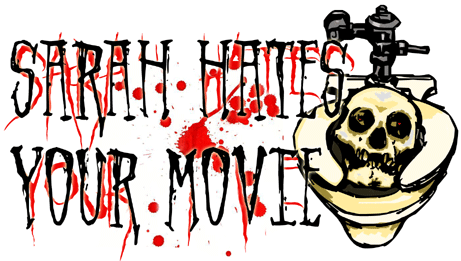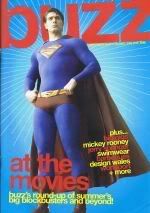Urban Explorer (2011)
Nazi-themed horror seems to be in fashion at the moment, which is probably why there’s a swastika on the UK DVD cover of Urban Explorer, since the film doesn’t really have anything to do with the Nazis.
It starts out promisingly: a group of strangers pay a tour guide to take them on a tour of the abandoned underground network beneath Berlin. Apparently, somewhere deep below the city is a forgotten Nazi bunker, which was recently rediscovered and then bricked up again to prevent neo Nazis gathering there; but when the intrepid explorers venture below ground, they quickly run into some violent creeps who very well might be neo Nazis.
Spoiler alert: they aren’t. They’re just one of the many, many red herrings this absurd piece of sub-Hostel nonsense has to offer.
As is traditional in this sort of horror movie, the victims soon make a succession of bad ideas – straying into parts of the underground that haven’t been properly explored before, building makeshift bridges out of debris – putting themselves in danger. After one spectacularly stupid move on the part of the group’s photographer, the group is forced to split up to seek help, and, naturally, soon fall prey to the monster lurking in the shadows. Despite the tour guide’s fanciful campfire stories of Nazi piano-playing and super-soldiers, the actual threat turns out to be much more recent: an ex-military psychopath who relished his border guard duties so much that he continues to enforce them from a drug-filled bunker in the bowels of the earth. It could almost, maybe, work as a concept… unless you stopped to think about it for a second.
In the utter absence of logic, then, what Urban Explorer delivers instead is some very nasty gore. It starts out pretty tame, and there’s a scene that appears to have been directly lifted from Hostel, but it builds to one particularly nasty scene that is, at least, reasonably original, and deeply unpleasant. You’ll need a strong stomach to get through it. That’s the only glimmer of originality to be found in this film, though, and its extreme gore sits oddly alongside its occasional moments of pure slapstick. All your standard horror movie tropes crop up, including the botched calls for help, the lack of cell phone signal, and the killer who’s never quite dead no matter how many bullets you put in him.
Apart from frustration, though, the main feeling this film provokes is déjà vu. We’ve seen spooky underground spaces lit by flares in The Descent; we’ve seen those dirty, dimly lit rooms full of torture instruments in Hostel; and we’ve even seen someone fall down a shaft and break their legs in The Ruins. It feels like this film should’ve come out five years ago; now, it seems a bit anachronistic. And while most horror movies are derivative in one way or another (and if you’re going to borrow from other films, you’re better off borrowing from half-decent ones!) it really does feel like this one doesn’t have anything new to offer.
Which is a shame, because if it’d delivered the winged Nazi super-soldier it suggested in its first half hour, it could’ve been amazing. But no. Most of the things that are set up at the beginning fail to pay off: there’s no Nazi element to the murders or the murderer; the piano doesn’t come back into play; even the creeps lurking in the underground don’t have any bearing on what happens later. In a better film, this might feel like deliberate misdirection; here, it just feels like carelessness. The sort of complaints that can be levelled at Urban Explorer – that it doesn’t quite make sense, that the characters have no depth, that the gore is purely sadistic and serves no greater purpose – are the same complaints that have been made of many other, better films over the past decade; it’s just kind of boring.
One final minor gripe, too: the young explorers are all different nationalities, which could be interesting, but only really means they each have a different accent. Most of the dialogue is in English, but it’s so heavily accented that it’s frequently difficult to understand, so it’s a relief every time the film lapses into (subtitled) German. Given that none of the group has a discernible personality, there doesn’t seem much point to their differing geographical backgrounds, other than making the (not particularly sparkling) dialogue that much harder to follow.
Basically, this is another one for the “why bother?” file. There’s some nice photography in the first reel, and the location is intriguing, but beyond that there’s absolutely nothing to recommend it.


















